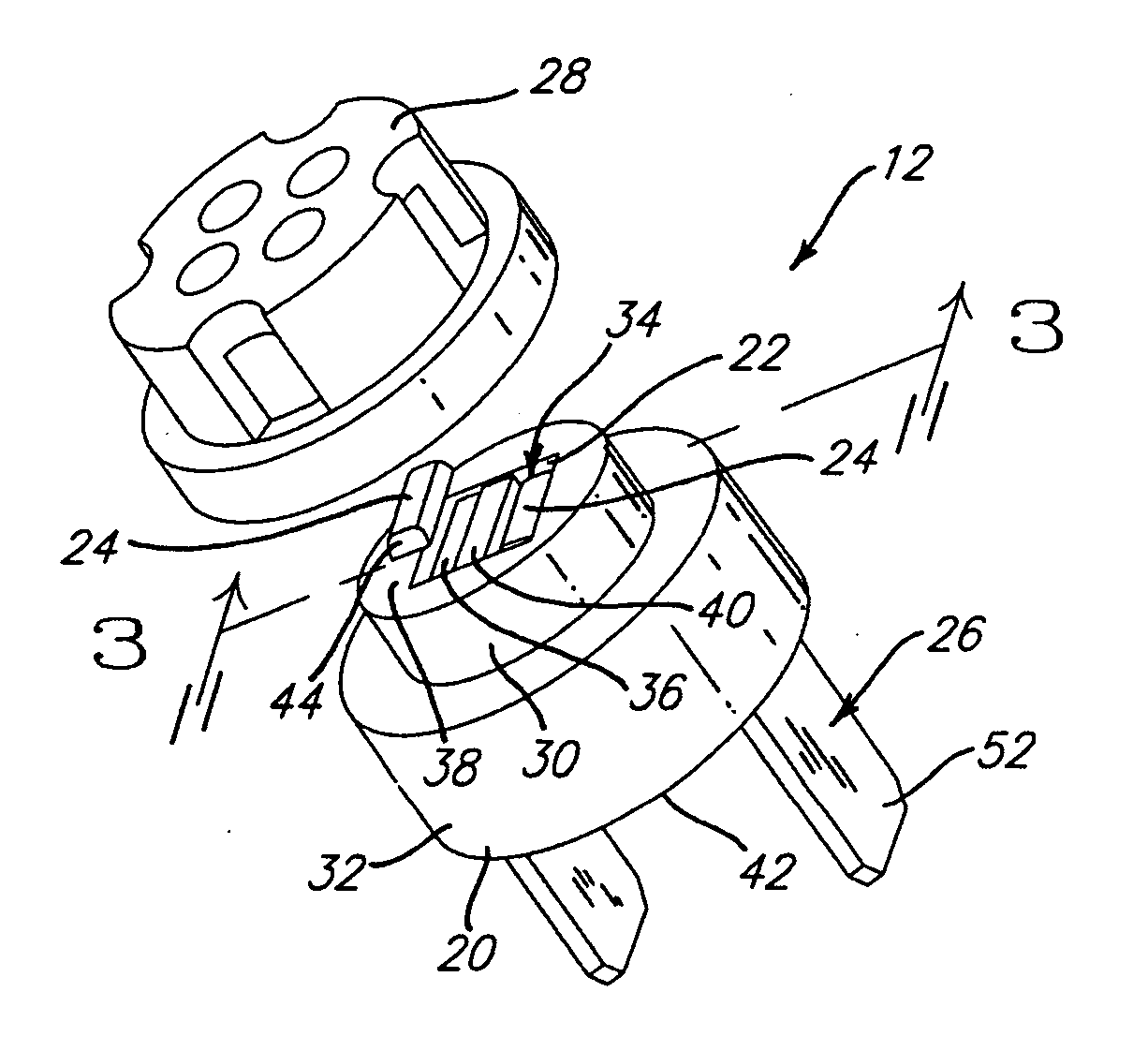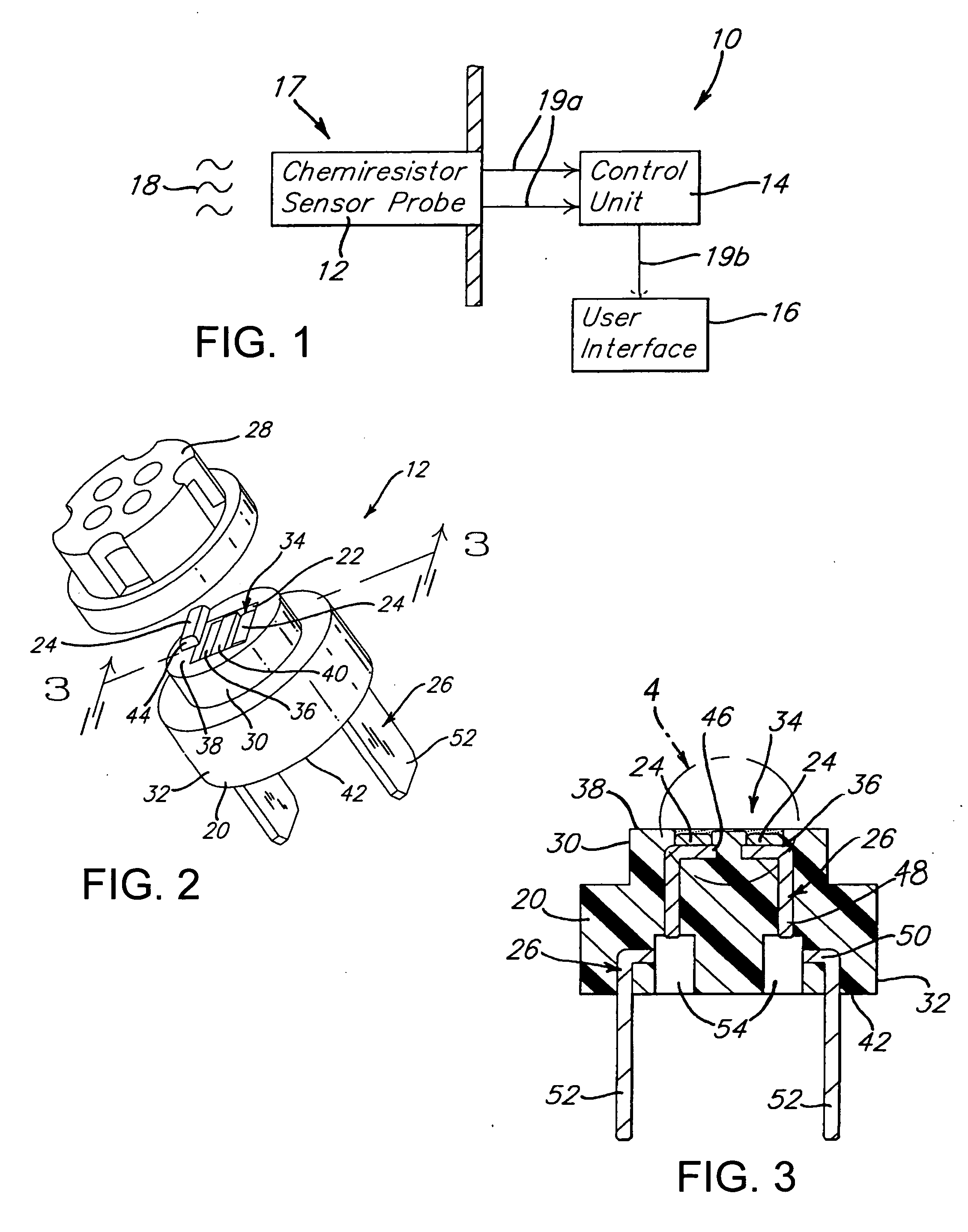Methods of minimizing temperature cross-sensitivity in vapor sensors and compositions therefor
a technology of temperature cross-sensitivity and vapor sensor, which is applied in the field of sensor films, can solve the problems of film volumetric change and film electrical resistance change, and achieve the effect of reducing temperature cross-sensitivity and resistance chang
- Summary
- Abstract
- Description
- Claims
- Application Information
AI Technical Summary
Benefits of technology
Problems solved by technology
Method used
Image
Examples
example 1
[0060] A sensor film polymer matrix having a blend of conductive particles including a PTC large particle size conductive carbon black and a NTC ultra high purity nickel oxide is prepared by adding the following materials into a mixer: 3 grams of a 3-5% vinylmethylsiloxane-44-52% octylmethylsiloxane-44-51% dimethylsiloxane terpolymer (commercially available as VAT 4326 from Gelest, Inc.) which is a cross-linked large hydrocarbon side group substituted siloxane polymer; 8 grams of a 7-13% hydromethylsiloxane-87-93% octylmethylsiloxane copolymer available as HAM-301 from Gelest; 10 grams of Asahi 15HS (a large particle size carbon black available from Asahi Carbon Company having an N2value of 14 m2 / g and a DBP of 85 ml / 100 g); 10 grams of ultra high purity nickel oxide available from Novamet Specialty Chemical Corp as Green Nickel Oxide; 0.1 grams of a platinum carbonyl cyclovinylmethylsiloxane catalyst complex (commercially available as SIP 6829 from Gelest, Inc.). The materials are ...
example 2
[0061] A sensor film polymer matrix having a blend of conductive particles including a PTC large particle size conductive carbon black and a NTC ultra high purity nickel oxide having a different polymer system from Example 1 is prepared by adding the following materials into a mixer: 96.9 parts by weight VAT-4326 a (3-5% vinylmethylsiloxane)-(35-40% octylmethylsiloxane)-(dimethylsiloxane) terpolymer available from Gelest; 3.1 parts by weight HES 992 (a polyethylhydrosiloxane curing agent from Gelest); 0.1 parts by weight SIP 6829 (a platinum carbonyl cyclovinylmethylsiloxane catalyst complex); and 50 parts per hundred resin (phr) of Asahi 15HS (a large particle size carbon black available from Asahi Carbon Company having an N2value of 14 m2 / g and a DBP of 85 ml / 100 g); 50 phr of ultra high purity nickel oxide available from Novamet Specialty Chemical Corp as Green Nickel Oxide. The materials are mixed in a BRABENDER® mixer for 15 minutes at 30° C. and 80 rpm to form a matrix mixture...
PUM
| Property | Measurement | Unit |
|---|---|---|
| temperature | aaaaa | aaaaa |
| temperature | aaaaa | aaaaa |
| particle size | aaaaa | aaaaa |
Abstract
Description
Claims
Application Information
 Login to View More
Login to View More - R&D
- Intellectual Property
- Life Sciences
- Materials
- Tech Scout
- Unparalleled Data Quality
- Higher Quality Content
- 60% Fewer Hallucinations
Browse by: Latest US Patents, China's latest patents, Technical Efficacy Thesaurus, Application Domain, Technology Topic, Popular Technical Reports.
© 2025 PatSnap. All rights reserved.Legal|Privacy policy|Modern Slavery Act Transparency Statement|Sitemap|About US| Contact US: help@patsnap.com



